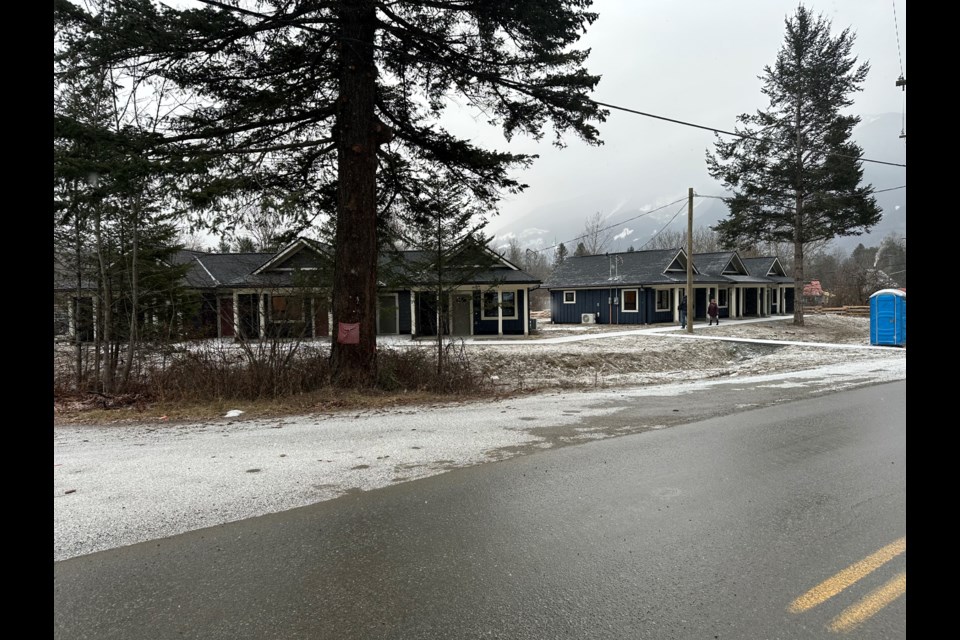The Lil’wat Nation has completed construction on six brand new “tiny homes” in Mount Currie, just off main street before Fish Hatchery Road and the train tracks.
These homes have mostly gone to young, first-time renters in the Nation.
“All the youth are very excited and happy to have their own first home places,” said Gayle Andrews, Lil’wat Nation’s housing coordinator.
The project was in the works for 14 months. Lil’wat Nation provided 30 per cent of the funding, while the remaining 70 per cent was provided by Indigenous Services Canada, which is “responsible for providing and managing housing on reserve.”
That funding can go towards construction, lot servicing, renovation, maintenance, insurance, debt servicing, planning and managing a housing portfolio, and mould remediation.
Construction began in April 2024 and wrapped in January. The result is six, one-bedroom studio suites—two of which are “fully wheelchair accessible,” according to an email from Andrews. The standard units are 459 square feet with 86 square feet of storage room. The accessible units are 484 square feet.
The Nation held an open house for the tiny homes on Jan. 30. Shortly thereafter, new renters moved in.
“Many of the first renters are first-time renters, young adults moving out of their parents' house,” said Tom Laviolette, the Nation’s director of infrastructure, in an email.
The tiny homes represent an important opportunity to address the Nation’s needs. A 2022 report found that 170 new housing units will be needed by 2033—130 for current needs and 40 to account for a growing population. The 2022 report shows the Nation is looking to achieve those targets with low- to moderate-density housing options, mostly consisting of duplexes, along with two sixplexes.
Gail told Pique the Nation already has a waitlist of about 100 on- and off-reserve members looking for housing—split evenly between those wanting one-bedroom and two-plus-bedroom units. The Nation is looking to use the tiny homes approach moving forward to help address that waitlist.
“Now that we built them we think that we have a good plan for more programs,” said Andrews. She noted the size of the homes helps meet energy efficiency and affordability standards required to obtain grant funding for future housing projects.





